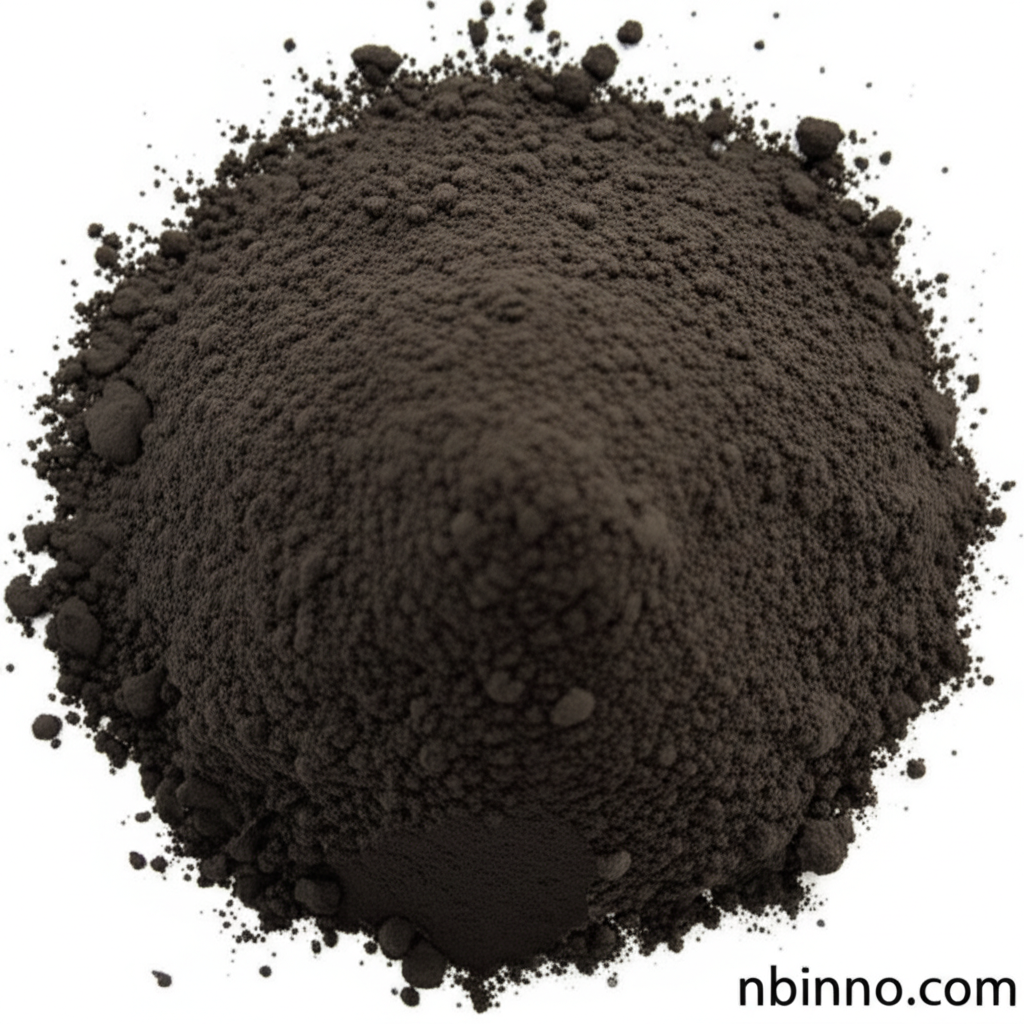High Purity Cupric Oxide (CAS 1317-38-0): A Versatile Inorganic Chemical
Discover the extensive applications of Cupric Oxide, a key component in glass, catalysis, and more.
Get a Quote & SampleProduct Core Value

Cupric Oxide
Cupric Oxide, with the CAS number 1317-38-0, is a critical inorganic chemical recognized for its high purity (98%min) and its distinctive black to brown amorphous powder appearance. Its versatility makes it an indispensable material across a wide spectrum of industrial processes.
- Explore the benefits of using cupric oxide 98%min as a superior coloring agent for both glass and porcelain, enhancing aesthetic appeal.
- Leverage the power of copper oxide catalyst for organic synthesis, driving efficiency and selectivity in chemical reactions.
- Utilize its capabilities as an industrial desulfurizing agent, crucial for purifying oils and petroleum products.
- Discover its role as a key raw material in rayon production, contributing to the textile industry.
Key Advantages
Versatile Industrial Use
As a cupric oxide catalyst for organic synthesis, this compound significantly boosts reaction efficiency and product yield, making it a preferred choice for chemical manufacturers.
Exceptional Coloring Properties
When used as a cupric oxide for glass coloring, it imparts rich, stable hues, allowing for the creation of aesthetically pleasing glass products and detailed porcelain glazing.
Essential for Purification Processes
Its function as a desulfurizing agent is vital for the oil industry, ensuring cleaner fuels by effectively removing sulfur compounds, thereby supporting environmental compliance.
Key Applications
Glass and Porcelain Coloring
As a reliable cupric oxide for glass coloring, it provides vibrant and consistent colors essential for decorative and functional glass items, as well as decorative porcelain finishes.
Catalysis in Organic Synthesis
The compound excels as a copper oxide catalyst for organic synthesis, facilitating a range of chemical transformations with high efficacy.
Industrial Desulfurization and Hydrogenation
Its role as an industrial desulfurizing agent and hydrogenating agent is critical in refining processes to purify oils and gases.
Rayon and Gas Analysis
The material is also integral to the production of rayon and serves as a crucial reagent in gas analysis, contributing to accurate scientific measurements.
Related Technical Articles & Resources
Why Choose Us?
Leverage our expertise and state-of-the-art infrastructure to accelerate your journey from discovery to commercial success.
Global Experience
With 20 years of R&D, manufacturing, and sales experience, we proudly serve clients across 60 countries and regions worldwide.
Advanced Facilities
Our in-house R&D laboratory, pilot platform, and large-scale production workshop are equipped to meet the audit requirements of global customers.
Seamless Scalability
We facilitate a perfect transition from small-scale lab requirements (grams) to full commercialization (hundreds of tons).
